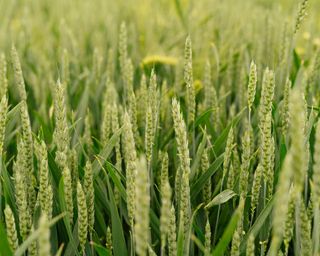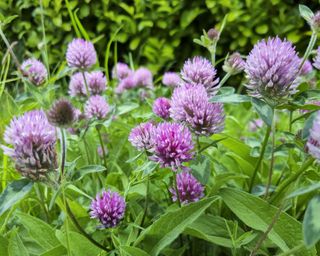Cover crops have long been used in farming, but did you know they can benefit gardens too? A cover crop is something you grow in what would otherwise be bare soil between growing seasons. Farmers use cover crops to build and protect soil for the next season. When tilled into the soil, it becomes green manure, adding nutrients and organic matter.
Planting cover crops isn’t just for commercial farms. Gardeners and small-scale home farmers can also benefit from the practice. Fall is the time to sow them, so here’s what you need to know to get started.
What Are the Benefits of Using Cover Crops?
While cover crops have traditionally been used on farms to suppress weeds and create green manure, home gardeners can also gain from their benefits:
- Cover crops reduce or prevent erosion of valuable topsoil.
- They minimize weed growth.
- The roots of cover crops help prevent soil compaction.
- Cover crops increase moisture and nutrients in the soil.
- They attract pollinators and beneficial insects.
The indirect benefit of all these factors is the improved health of whatever plants you grow. If you grow your own vegetables, cover cropping can help boost your yield.
Best Cover Crops to Plant in Fall
A cover crop is any plant used to cover bare soil when not in use for another crop. So, while it can be anything, some plants are better than others for the practice of cover cropping. In particular, legumes are popular for their ability to add nitrogen to the soil.
Most cover crops need to be tilled into the soil to be used as green manure. However, there are some no-till cover crops to choose from.
Below are six excellent choices of cover crops to plant this fall in your garden.
1. Winter Rye

(Image credit: Shutterstock)
Winter rye is a popular cover crop for the winter in colder climates. It’s very cold hardy, so even if you’ve delayed sowing a cover crop until late fall, you can still use winter rye. It will continue to grow throughout winter, sending out long roots that break up compacted soil.
Sow rye seeds no deeper than two inches and provide water for the first couple of weeks if it doesn’t rain. Cut back winter rye about one to two weeks before you start planting in the spring. You can mulch and leave it in place or compost the plant material.
2. Winter Wheat

(Image credit: Shutterstock)
Winter wheat is another good option for sowing in fall because of its cold hardiness. It can send roots down more than three feet (0.9 m) into the soil, so it’s particularly good for erosion prevention and soil aeration. Winter wheat also adds a lot of nutrients to the soil.
Mow winter wheat in spring before it sets seeds. Aim to cut it back a few weeks before spring planting. This will allow time for some of the material to break down and enrich the soil. You can use dried wheat straw as mulch or compost it.
3. Red Clover

(Image credit: Getty Images)
Red clover has a lot of positive attributes as a cover crop. It is a legume, which means it fixes nitrogen and boosts usable nitrogen content in the soil. It also grows quickly, covers the ground densely, and is very effective at preventing weed growth. The roots are good at loosening soil.
Sow red clover seeds throughout fall, even as late as November. Seeds should be sown to a depth of about a half inch (1cm). Keep the soil moist as the seeds germinate over the course of 7 to 10 days.
If you live in USDA hardiness zone 5 or colder, winter will kill clover groundcover. If you live in a warmer climate, till or smother clover in spring to kill it before spring planting.
4. Hairy Vetch

(Image credit: Getty Images)
Hairy vetch is another legume that adds fixed nitrogen to the soil. It also excels at suppressing weeds and is winter hardy and suitable for colder climates. Its vigorous growth is what makes hairy vetch so good at keeping weeds down, but this can interfere with spring planting. It’s essential that you kill it before it can self-seed and spread.
Sow hairy vetch seeds in fall to a depth of one inch (2.5cm). Germination takes 10 to 14 days, so keep the soil moist during this period. In the spring, mow, till, or tarp hairy vetch to kill it before you begin planting.
5. Tillage Radish

(Image credit: Getty Images)
This type of cover crop is different from the typical grains and legumes used for coverage in winter. Also known as forage or oilseed radish, a tillage radish is a type of daikon that grows a large taproot. This makes it ideal for soil that really needs to be broken up and aerated. As a bonus, you can eat the roots and the leaves.
Anything you don’t eat will decay in spring, adding nutrients to the soil and leaving large holes behind.
6. Sorghum

(Image credit: Shutterstock)
A good fall-seeded cover crop for warmer climates, sorghum grows quickly and adds nutrients to the soil. Another unique aspect of sorghum is that it suppresses nematodes. If you have struggled with these soil-dwelling pests, try sorghum as your winter cover crop.
Sow seeds in fall to a depth of about a half inch (1cm). Keep the soil moist until the seeds germinate, in two to three weeks.
Mow sorghum down in early spring and either compost the grass or use it as a mulch. Don’t let it go to seed.











